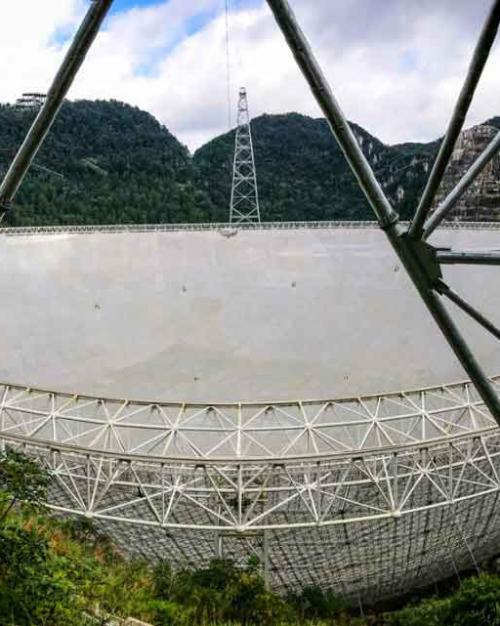What seemed a cosmic trickle almost a decade ago now appears as a rapid-fire barrage from across the universe.
An international team of astronomers including Cornell researchers have detected 1,652 independent millisecond explosions – called fast radio bursts, or FRBs – over a period of only 47 days, from a source about 3 billion light-years away. The team’s findings are published Oct. 13 in the journal Nature.
“From this source, 1,652 fast radio bursts are a startling number,” said co-author Shami Chatterjee, Ph.D. ’03, principal research scientist in astronomy in the College of Arts and Sciences. “Until now, astronomers had been talking about a handful of bursts – a few, then maybe 10 and perhaps 25. But now were talking about over 1,600 bursts over 47 days. That’s really dramatic.”
FRBs are mysterious transient explosions that last a thousandth of a second. In that tiny flash, they can yield the same amount of energy as our sun expresses in three days.
Astronomers don’t know the causes of these explosions, but many agree they are likely from exotic, hypermagnetized neutron stars, or magnetars.
The group used the new Five-hundred-meter Aperture Spherical radio Telescope, known as FAST, in Guizhou, China – getting first light in 2016 and formally commissioned in 2020 – to find the blasts, which they found between Aug. 29 and Oct. 29, 2019.
The source of the 1,652 FRBs – FRB 121102 – was detected in 2012 by then-graduate student Laura Spitler, M.S. ’10, Ph.D. ’13, as she sifted through 2012 data from the Pulsar Arecibo L-Band Feed Array (PALFA) survey at Arecibo Observatory, Arecibo, Puerto Rico. She published that finding in 2014. Spitler now conducts FRB research for the Max Planck Institute for Radio Astronomy in Bonn, Germany.
Two years later, Spitler found that FRB 121102 was a repeating source, and a year later, Chatterjee located it in a dwarf galaxy some 3 billion light-years away. Astronomers determined that only about 10% of fast radio bursts repeat.
The 1,652 fast radio bursts have surprised the astronomical community. “Whatever is producing those bursts,” Chatterjee said, “it’s got to be unimaginably energetic.”
“Having a large number of bursts on a given day, we still cannot identify its period,” said co-author James Cordes, the George Feldstein Professor of Astronomy (A&S). “We know that a spinning object like a pulsar – which has a lighthouse-like beam – has a specific period. But this FRB is more of a puzzle.”
Said Cordes: “There might be a neutron star involved, but we have no hint of a periodicity. It deepens the mystery.”
This research, “A Bimodal Burst Energy Distribution of a Repeating Fast Radio Burst Source,” was led by Di Li Ph.D. ‘02 and Wang Pei from National Astronomical Observatories of Chinese (NAOC) Academy of Sciences.
As a Cornell alumnus, Di is the chief scientist of both FAST and the radio division of NAOC. Currently, he leads a FAST survey that has discovered more than 100 pulsars and more than 5 FRBs.





